- Home
- 02・テオティワカン文明
- 【マスク Mask】メキシコ‐テオティワカン文明
【マスク Mask】メキシコ‐テオティワカン文明
- 2023/11/13
- 02・テオティワカン文明
- コメントを書く

この「マスク Mask」は、4世紀から8世紀にかけてのメソアメリカ、特にテオティワカン文化に属する作品です。この文化はメキシコに位置する古代の都市テオティワカンで栄えました。このマスクはオニキス大理石(テカリ)という貴重な素材で作られており、非常に古い時代のものです。
このマスクは美しい彫刻と装飾が施された貴重なアート作品で、特にその装飾的な要素や精巧な彫刻が印象的です。テオティワカン文化は、芸術や工芸の分野で高い技術と芸術性を示し、このマスクはその一例です。彫刻や文様には、この文化独自の宗教的や宇宙的な意味が含まれている可能性があります。
このマスクは、テオティワカン文化の宗教的儀式や祭り、あるいは重要な社会的な行事で使用された可能性があります。また、この文化の信仰や宗教に関連したアイコンとして使用された可能性も考えられます。
緑の大理石(テカリ)は、テオティワカン文化で特に価値があり、その輝きと美しさから、宗教的な象徴や贈り物として重要な役割を果たしたと考えられています。このマスクの美しさと宗教的な意味合いは、テオティワカン文化の豊かな芸術遺産の一部を示しています。
テオティワカン文化に関連する彫刻スタイルに見られる、立体的な人間のような顔を描いた石のマスクが多く存在します。このマスクは、水平に描かれた眉、三角形の鼻、楕円形の口、そして目を特徴とする幾何学的な表現で、肖像画ではなくシンボルとして機能すると思われる、理想化された顔のタイプを描いています。このような標準化されたモチーフは、テオティワカンの芸術に見られる他のモチーフと同様に、象徴的な要素として機能した可能性があります。
この緑色のオニキスのマスクは、元々目や歯を表現するために黄鉄鉱や貝殻がはめ込まれていた可能性があります。裏面にある側面の穴からは、別の物に取り付けることを意図したものであることが分かります。しかし、石の重さと目や口の穴がないことから、これらのマスクは生きている人々が身につけるものではなかったでしょう。代わりに、これらはより大きな、腐敗しやすい人間や神の彫像に取り付けられたり、またはミイラや神の束に取り付けられたりした可能性があります。これらのマスクは、メソアメリカのトウモロコシの神を地元のバージョンとして表現しているかもしれず、岩の顔は、トウモロコシの種子を象徴し、植えられてやわらかい芽として再生されることを示しています。


画像出所:メトロポリタン美術館
さらなる読書資料:
Berrin, Kathleen, and Esther Pasztory. Teotihuacan: Art from the City of the Gods. The Fine Arts Museums of San Francisco, 1993.
Carballo, David M., Kenneth G. Hirth, and Barbara Arroyo. Teotihuacan: The World Beyond the City. Dumbarton Oaks, 2020.
Cowgill, George L. State and Society at Teotihuacan. Annual Review of Anthropology, Vol. 26, pp. 129-161, 1997.
Headrick, Annabeth. The Street of the Dead…It Really Was: Mortuary Bundles at Teotihuacan. Ancient Mesoamerica, Vol. 10, No. 1, pp. 69-85, 1999.
Headrick, Annabeth. The Teotihuacan Trinity: The Sociopolitical Structure of an Ancient Mesoamerican City. University of Texas Press, 2007.
López Luján, Leonardo, Laura Filloy Nadal, Barbara W. Fash, William L. Fash, and Pilar Hernández. The Destruction of Images in Teotihuacan: Anthropomorphic Sculpture, Elite Cults, and the End of a Civilization. RES: Anthropology and Aesthetics, no. 49/50, pp. 12-39, Spring-Autumn, 2006.
Manzanilla, Linda R. Cooperation and tensions in multiethnic corporate societies using Teotihuacan, Central Mexico, as a case study. Proceedings of the National Academy of Sciences of the United States of America, Vol. 112, No. 30, pp. 9210-9215, 2015.
Murakami, Tatsuya. Entangled Political Strategies: Rulership, Bureaucracy, and Intermediate Elites at Teotihuacan. In Sarah Kurnick and Joanne Baron, eds., Political Strategies in Pre-Columbian Mesoamerica, pp. 153-179. University Press of Colorado, 2016.
Pasztory, Esther. Teotihuacan: An Experiment in Living. University of Oklahoma Press, 1997.
Robb, Matthew. Teotihuacan: City of Water, City of Fire. Berkeley: University of California Press, 2017.
Robb, Matthew H. “The 500 Faces of Teotihuacan: Masks and the Formation of Mesoamerican Canons.” In Canons and Values: Ancient to Modern, edited by Larry Silver and Kevin Terraciano, 114–37. Los Angeles, CA: Getty Research Institute, 2019.
Ruiz Gallut, María Elena, and Jesús Torres Peralta, eds. Arquitectura y urbanismo: pasado y presente de los espacios en Teotihuacan: Memoria de la Tercera Mesa Redonda de Teotihuacan. Mexico City, Instituto Nacional de Antropología e Historia, 2005.
Sarro, Patricia J., and Matthew H. Robb. Passing through the Center: The Architectural and Social Contexts of Teotihuacan Painting. In Cynthia Kristan-Graham and Laura M. Amrhein, eds., Memory Traces: Analyzing Sacred Space at Five Mesoamerican Sites, pp. 21-43. University Press of Colorado, 2015.
画像出所:メトロポリタン美術館
コメント
トラックバックは利用できません。
コメント (0)

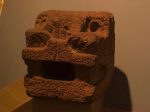
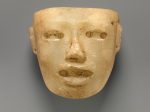
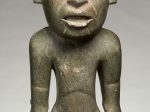
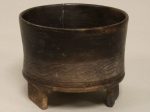
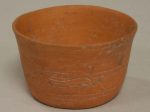
この記事へのコメントはありません。